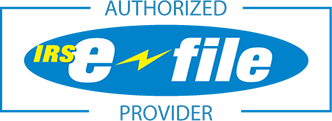

Driving while drowsy, even if you fall asleep at the wheel, surprisingly isn’t illegal, but it does present a huge issue. The AAA Foundation for Traffic Safety stated that an estimated 21% of fatal crashes involved a drowsy driver, and the CDC predicts that up to 6,000 fatal crashes each year may be caused by drowsy drivers. In fact, the CDC found that going without sleep for 18 hours has the same effect as having a blood alcohol content (BAC) of 0.05%, and being awake for 24 hours is equal to having a BAC of 0.10% (which is higher than the legal limit to drive).
This is a particularly pressing concern for truck drivers. Driving for hours on end without a break to sleep and reenergize is a recipe for drowsy driving, but often, that’s exactly what truck drivers are expected to do. For that reason, the government has passed laws regarding how long drivers can be on duty, how long they can drive, and how frequent and lengthy breaks need to be. The problem is enforcing those laws in a way that doesn’t hinder a trucker’s ability to do their jobs. The most recent solution has been implementing an ELD mandate, but while there are many ELD benefits, there are also plenty of drawbacks. Whether or not they’re worth it is hotly debated.
An ELD, which stands for electronic logging device, is a piece of technology that is designed to help commercial truckers keep accurate hours of service (HOS) records – permanent logs of driving hours, on-duty hours, and rest time. While truck drivers have been legally required to maintain HOS records since 1937, ELDs are meant to make the process more efficient and easier to perform by introducing automation.
So, how does the technology work? ELDs connect to the vehicle’s engine to automatically document driving activity and update driver logs. They look at whether the engine was running, how long the engine was operating, if the vehicle is moving, and the number of miles driven to provide more visibility into driver hours. The HOS data is then recorded in the fleet management software and displayed on a tablet inside the cab of the vehicle, allowing the driver to view or present it when needed.
ELDs automatically record the following details:
Only recently have truck drivers been required to keep HOS records electronically. Prior to the ELD mandate, many truckers relied on paper logs or an earlier technology called an Automatic On-Board Recording Device (AOBRD). These paper logs and AOBRDs had to be replaced by ELDs due to the ELD mandate, a federal regulation designed to ensure compliance with HOS requirements. As of December 16, 2019, all drivers subject to the ELD mandate must have a Department of Transportation (DOT) approved Record of Duty Service (RODS) logging device hard-wired to their vehicle’s engine.
The mandate applies to all commercial buses and trucks that were already required to keep RODS, which is the vast majority of the trucking industry. However, there are a few exceptions. The following drivers have the option to continue using paper records:
One of the main ELD benefits is the increased accuracy they foster. With paper logbooks, drivers could make accidental errors and miscalculations, or worse, they could be pressured by their employers to manipulate their hours in order to drive more miles with fewer breaks – which can be dangerous. ELDs alleviate this concern, as everything is recorded automatically. In fact, The Center for Truck and Bus Safety of Virginia Tech Transportation Institute found that drivers using e-logs had an 11.7% lower total crash rate than those without.
Increased efficiency is another of the ELD benefits. With an ELD, drivers experience fewer and faster inspections, fewer Driver Vehicle Inspection Reports and International Fuel Tax Agreement (IFTA) reporting, and a reduction in IFTA audit risks.
For drivers, the reduction in time spent on paperwork is one of the biggest ELD benefits. Paper logs typically have to be filled in by hand and faxed at fuel stops, which eats into drivers’ time. ELDs, on the other hand, track and update logs automatically, sparing drivers from having to do so themselves.
While there are plenty of ELD benefits, there are also plenty of drawbacks. To start, ELDs aren’t cheap. Though the price has decreased significantly in the past few years, the FMCSA estimates that the average annual cost of an ELD is still $495 a truck. Although this may seem costly at first glance, some argue that efficiencies gained can net out the cost.
For many drivers, the implementation of the ELD mandate was a major cause of concern. Whether it be because they don’t want big brother breathing down their necks, don’t want to learn the new technology, or don’t want to have to cut down on their miles, many truckers have decided it’s no longer worth working in the industry, and experts say many truck drivers over the age of 60 will use the mandate as an opportunity to switch jobs or retire. Considering how important truck drivers are, anything that makes the trucker shortage worse could be a major issue.
Perhaps the biggest drawback of ELDs is that in some instances, they can actually have the opposite effect of what they were intended to do; they can pose a real safety risk to drivers. Many truckers feel they have to drive in traffic, in poor weather, or when they are drowsy simply because the clock is ticking. Drivers have to race against time to finish jobs as quickly as possible, potentially causing them to take more risks, and they can’t drive an extra half hour to find a safe rest stop – once they’re due for a break, they have to take it regardless of where they are.
There are many ELD benefits and drawbacks, but regardless of where you stand on the matter, they are a requirement, and so is filing Form 2290 and paying the HVUT. Luckily, with i2290, doing so is quick, easy, and hassle-free. Our software will walk you through a short series of questions about your business and your vehicles, automatically calculate your taxes for you, and get you your IRS-stamped Schedule 1 in a matter of minutes. Once you file, your tax documents will be securely stored online for you to access whenever you need them, and if you need help at any point in the process, our dedicated staff is happy to help.
Ready for a better Form 2290 filing solution? Create an account with i2290 today!
Special note: This article is for informational purposes, and is not intended to provide, and should not be relied on for tax, legal, investment, or accounting advice. The best way to ensure you’re meeting legal requirements and paying appropriate taxes is by following IRS regulations and consulting with a professional.
We're confident that your experience with INSTANT 2290 will be the best Form 2290 e-filing you've ever had. If for any reason you are not satisfied, just contact support for a full refund. No questions. No conditions. Create your account to get started!